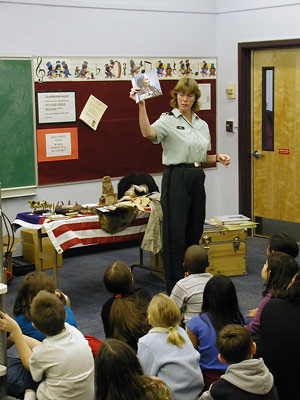目前,評估CLIL學習過程的研究多集中於語言方面(Dalton-Puffer & Nikula, 2006) 。而(Airey, 2009) 嘗試將以內容為基礎的前提下和語言表現連結,他測量學習者在科學領域的演講速度和句子長度。
在評估學程中學習過程的影響時,可以從語言的角度來評估,這時焦點可能是語言的功能、句法或語法能力;也可以從使用語言在處理概念或者是否其是否展現理解來看;更甚者,從小組中,彼此協商的過程,語義和文本如何被建構,也是一個評估的角度。
References
Airey,
J. (2009). Estimating undergraduate bilingual scientific literacy in
Sweden. International CLIL Research Journal, 1(2), 26-35.
Campo,
A., Grisaleña, J. & Alonso, E. (2007). Trilingual Students in
Secondary School: A New Reality. Bilbao: Basque Institute of
Educational Evaluation and Research, , .
Coyle,
D., Hood, P. & Marsh, D. (2010c). Evaluating and creating
materials and tasks for CLIL classroom. In (), Content and
Language Integrated Learning. Cambridge University Press.
Coyle,
D., Hood, P. & Marsh, D. (2010a). Evaluating the impact of CLIL
programmes. In (), Content and Language Integrated Learning.
Cambridge University Press.
Coyle,
D., Hood, P. & Marsh, D. (2010b). The CLIL Tool Kit: Transforming
theory into practice. In (), Content and Language Integrated
Learning. Cambridge University Press.
Dalton-Puffer,
C., Hüttner, J., Schindelegger, U. & Smit, U. (2009).
Technology-Geeks Speak Out: What Students Think About Vocational
CLIL. International CLIL Research Journal, 1(2), 18-25.
Dalton-Puffer,
C. & Nikula, T. (2006). Pragmatics of content-based instruction:
Teacher and student directives in Finnish and Austrian classrooms.
Applied Linguistics, 27(2), 241-267.
De
Graaff, R., Jan Koopman, G., Anikina, Y. & Westhoff, G. (2007).
An observation tool for effective L2 pedagogy in content and language
integrated learning (CLIL). International Journal of Bilingual
Education and Bilingualism, 10(5), 603-624.
Hood,
P. (2006). Unpublished data from CLIL research interviews with
students at Tile Hill Wood Language College. , , .
Lasagabaster,
D. (2008). Foreign language competence in content and language
integrated courses. The Open Applied Linguistics Journal, 1(1),
.
Lasagabaster,
D. & Sierra, J. M. (2009). Language attitudes in CLIL and
traditional EFL classes. International CLIL Research Journal,
1(2), 4-17.
Marsh,
D. et al. (2008). Profile Report: Bilingual Education (English) in
Poland. Warszawa: The National Centre for Teacher Training and
Development (CODN) & British Council Poland, , .
Moate,
J. M. (2011). The impact of foreign language mediated teaching on
teachers’ sense of professional integrity in the CLIL classroom.
European Journal of Teacher Education, 34(3), 333-346.
Ruiz
de Zarobe, Y. (2008). CLIL and foreign language learning: A
longitudinal study in the Basque Country. International CLIL
Research Journal, 1(1), 60-73.
Westhoff,
G. (2004). The art of playing a pinball machine. Characteristics of
effective SLA-tasks. Babylonia, 12(3), 58-62.
Woodfield,
J. & Neofitou, A. (2006). Immersion Project Research Findings. ,
, .



沒有留言:
張貼留言
留個言吧…